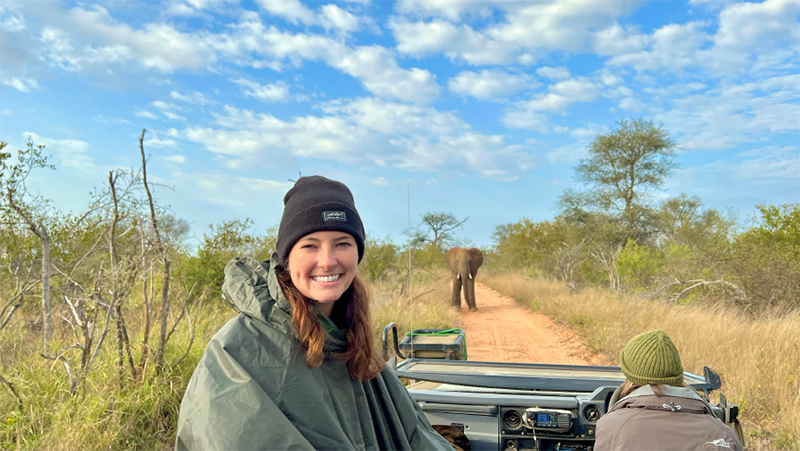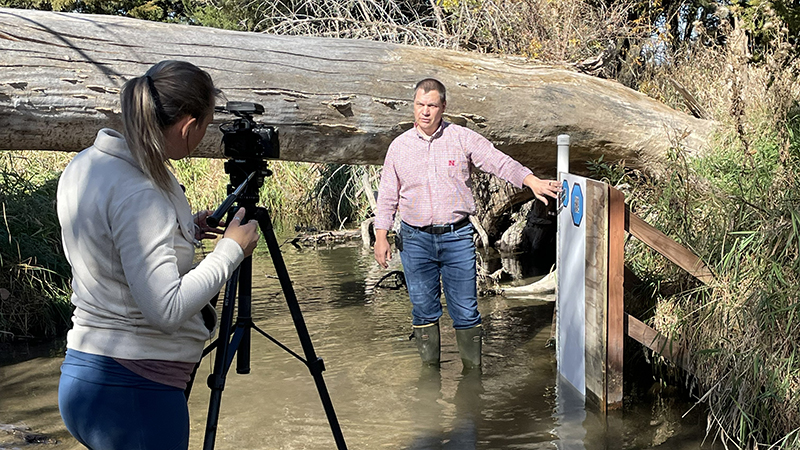
Huskers launch GRIME AI, boosting research using camera networks
Troy Gilmore, hydrology professor, and John Stranzl, doctoral student, have opened the gates on water research through the launch of GRIME AI online Sept. 16, 2025 10/28/2025
Continue the Story

Elephant researcher wins 2025 doctoral award in SNR
"It's just such a crazy concept to a lot of people that Nebraska is where you go to study elephants." — Katie Campbell has been studying male elephants, called bulls, at zoos across the country. Like other wild animals, elephants breed less successfully in captivity than in the wild. Although past researchers have looked at and addressed reproductive issues of female elephants, few cast a sideways glance at the males. 5/27/2025
Continue the Story
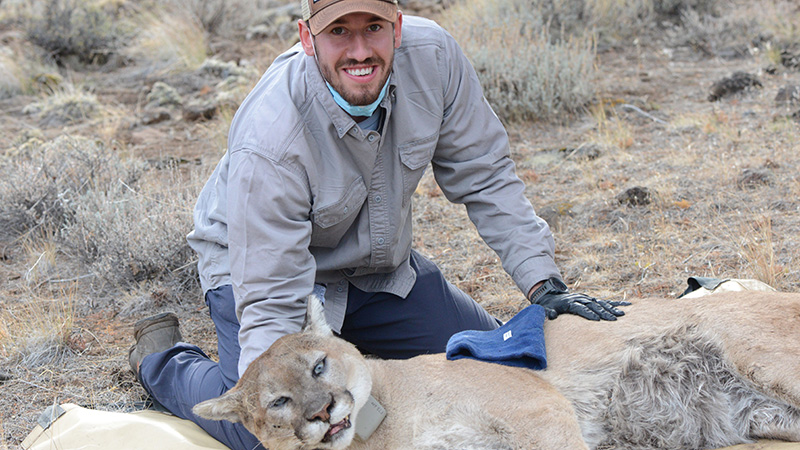
Mountain lion researcher named SNR's 2025 meritorious master's student
"A lot of wildlife biologists enjoy fieldwork and being outside. Fewer excel at the intellectual sides of research, including asking questions, analyzing data and writing. Jake brings the same high level of motivation to all these tasks and does them all very well." – Advisor John Benson 5/12/2025
Continue the Story

Martens surveys resilience in Nebraska's Sandhills
"By researching resilience, I think we can help communities develop networks and resources that allow them to not just cope with change now, but also adapt and build a stronger community in the future." —Kyle Martens, doctoral student in natural resource sciences 3/12/2025
Continue the Story

Nebraska scientist documents badgers and coyotes hunting together
Emma Balunek was watching motion-activated video she had taken of a rockpile in rural Colorado when a badger and coyote strolled onto the scene together. The young scientist knew badgers and coyotes competed for the same prey and even preyed upon each other. Why were these two strolling side by side? 9/30/2024
Continue the Story

Khushal gets scholarship to present biology research in Estonia
Anum Khushal's research on using quantitative reasoning in undergraduate biology classes earned her a scholarship to present at a Northern European summer school August 19-24, 2024. 9/30/2024
Continue the Story

Quick immersion into wildfowl experience pays off for new graduate student
It wasn’t a wild good chase that sent Ava Britton to Canada this past summer. More like a wild duck chase, and a successful one at that. 9/5/2024
Continue the Story

Graduate Student Spotlight: Kaitlyn Dozler
Meet Kaitlyn Dozler, a master's student researching the acute stress response of cattle to virtual fencing and potential ways virtual fencing can be used for specific rangeland management practices.. 8/8/2024
Continue the Story

Dittmer sees duck survival smarts through gritty research
Ethan Dittmer, a waterfowl scientist and Nebraska doctoral student, said his research this past year on the Southeast Kansas Mallard GPS project indicates the ducks are smart enough to hide from hunters. 5/6/2024
Continue the Story
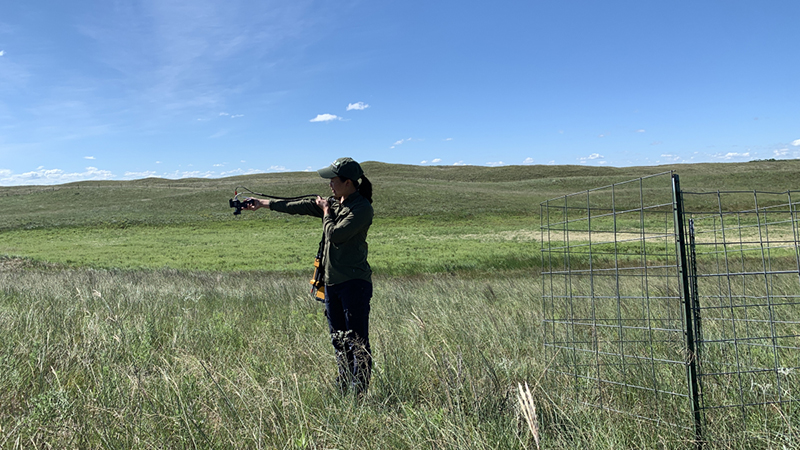
Chan studying resilience of Sandhills vegetation with remote sensing
On a hot June day in 2022, Catherine Chan walked into the Sandhills with a team of university researchers and realized she had walked into an ecological mystery. 3/11/2024
Continue the Story

Doctoral student braves cold to research climate
As a doctoral student in natural resource sciences and specializing in climate assessment and impact, Jerome Okojokwu-Idu always has climate on his mind. Day to day, he is constantly thinking about ways climate affects people’s lives in his home country of Nigeria. 1/9/2024
Continue the Story
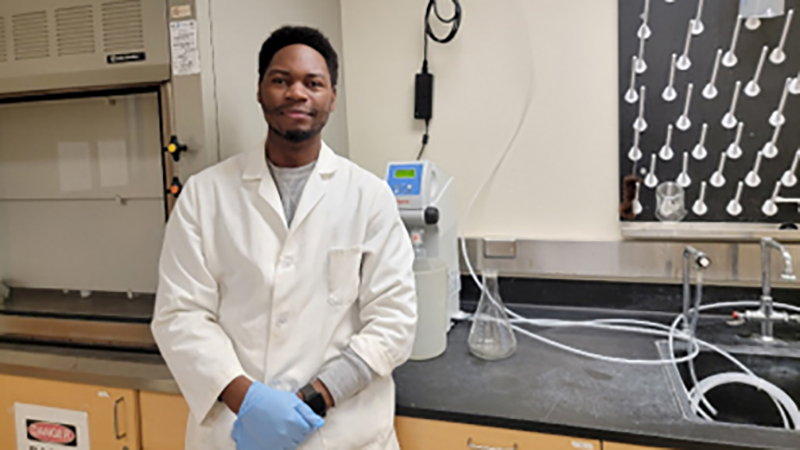
Graduate Student Spotlight: Yvon Ukwishaka
As a master's student, I am researching the prevention of underground water contamination caused by excessive use of fertilizers. 9/28/2023
Continue the Story

Balunek wins Kaufman Research Award from the American Society of Mammalogists
Emma Balunek, an Masters of Applied Science program candidate wins an research award for her master’s project on the coyote-badger hunting relationship titled “You Go Over and I Go Under.” 9/6/2023
Continue the Story
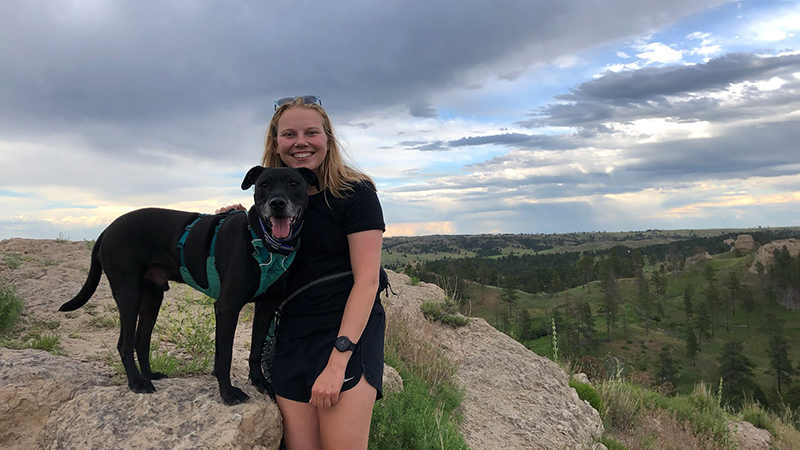
Caily's Quota on Water
Caily Schwartz is determined to bring about a positive change in the world and increase awareness of water conservation and proper management of water resources based on scientific findings. 6/29/2023
Continue the Story
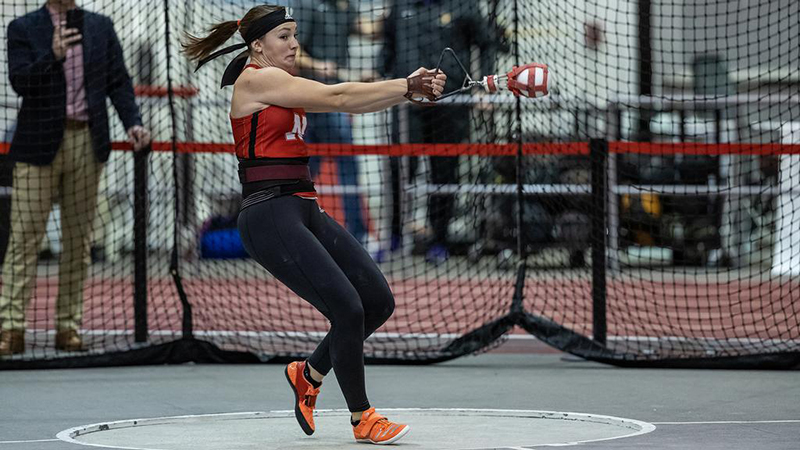
Tanessa, an Inspiration!
Tanessa Morris, a graduate student pursuing a degree in Natural Resource Sciences with a specialization in Hydrological Sciences and the 2023 Big 10 Conference Champion in Women’s Hammer Throw. 6/4/2023
Continue the Story
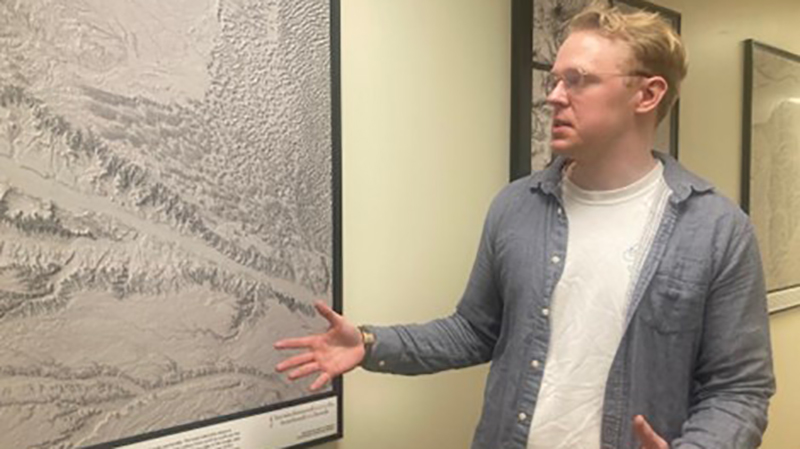
Graduate Student Spotlight: Noah Berkowitz
Noah Berkowitz is a PhD candidate with an emphasis in remote sensing. Noah is researching the best approaches to ensuring an efficient use of land resources. The end is to see satellite imaging deployed in analyzing land productivity for crops and to decide early on the reallocation of the same piece of land to more productive use, like preservation/conservation. 3/20/2023
Continue the Story
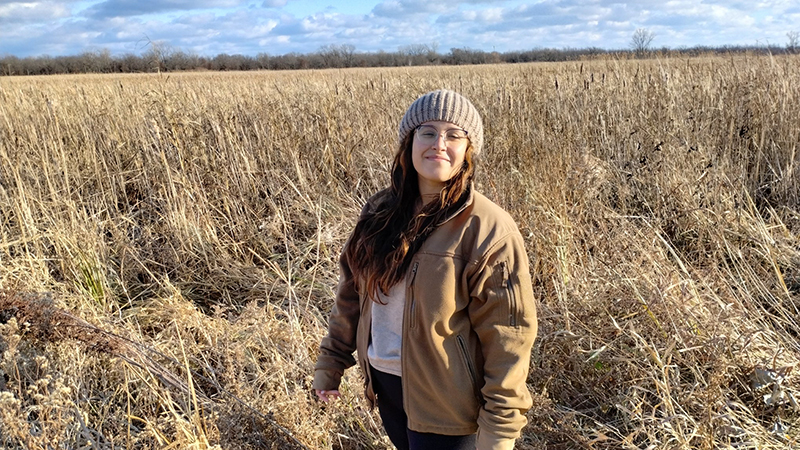
Graduate Student Spotlight: Katia Carranza
Katia Carranza is an environmental scientist focused on people.
“I see people as part of nature, which is not typical in the environmental fields that tend to focus on nature and not people,” she says. “Environmental fields often don't recognize that people are part of the environment and that their well-being also has to be improved.” 12/1/2022
Continue the Story
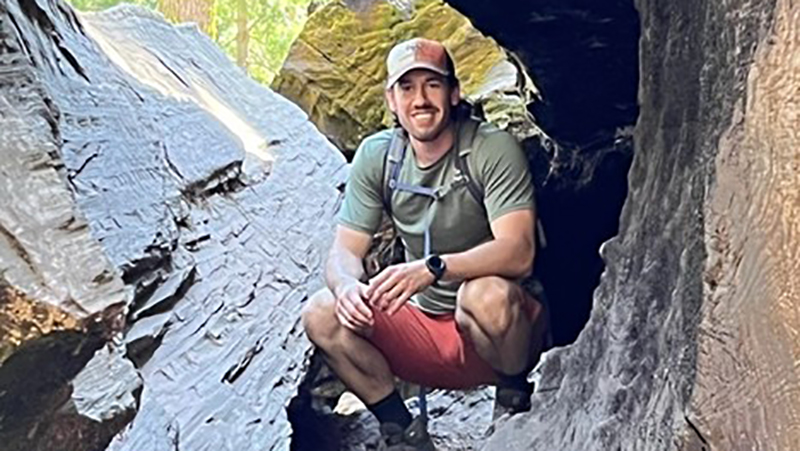
Harvey studies mountain lion behavior and movement in a human-dominated landscape
Jake Harvey, MS candidate in Natural Resource Sciences with a specialization in Applied Ecology, assists in gaining a better understanding of mountain lion ecology to inform management decisions and educate the community to promote coexistence and long-term conservation of mountain lions, as well as their prey and habitats. 11/3/2022
Continue the Story
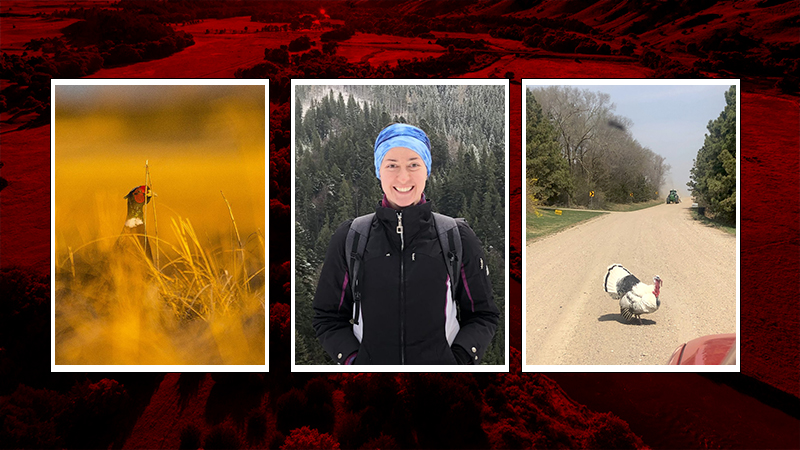
Barg field research diary featured in Nebraskaland
Allison Barg, a PhD candidate in Natural Resource Sciences and member of the AWESM lab, shares from her research field log in a two part Nebraskaland magazine story. 5/20/2022
Continue the Story
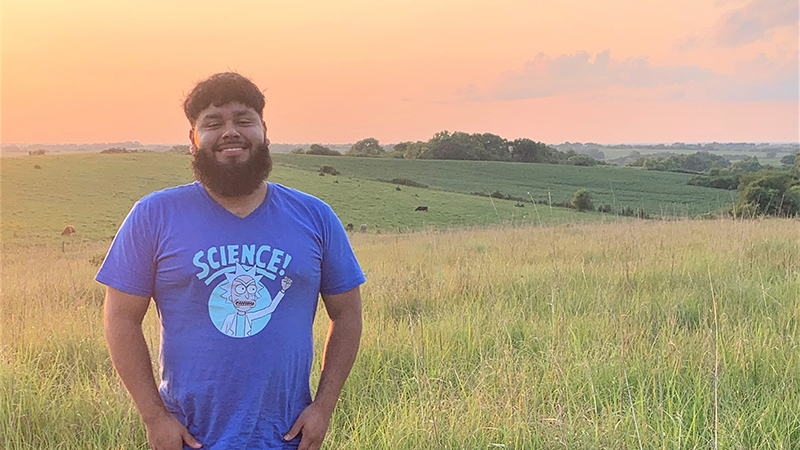
Morales leads landowner workshops in Denton Hills
Daniel Morales, an NRT master’s student studying natural resources management, led workshops in the Denton Hills on February 4 and April 28, 2022 to hear landowner concerns and gain experience in community engagement. 5/2/2022
Continue the Story
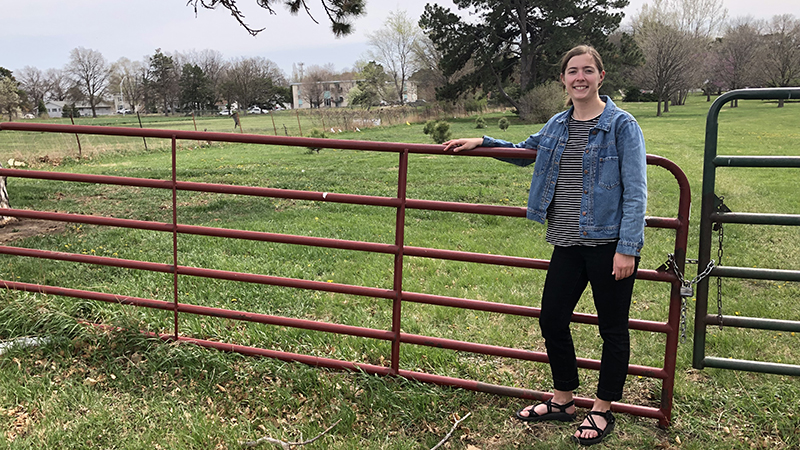
NRT student publishes on method of rating "stakeholder agency"
For NRT master's student Kate Bird, her first publication all came down to means, motive and opportunity.
She and the 12 other authors on the journal article had worked together for a year and a half in a National Science Foundation program for graduate students, Innovations at the Nexus of Food, Energy, and Water Systems—Educational Resources. 4/27/2022
Continue the Story
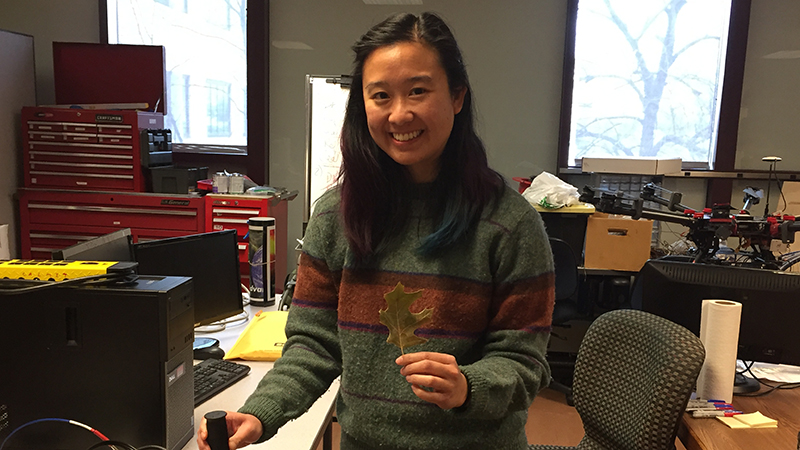
Graduate Student Spotlight: Catharine Chan - Finding her way with remote sensing
Catherine Chan came from New England to Nebraska, looking for a change of pace. She found the more relaxed lifestyle she craved in, of all places, her doctoral program. Chan is using remote sensing to research plant diversity through the School of Natural Resources on East Campus. 3/31/2022
Continue the Story
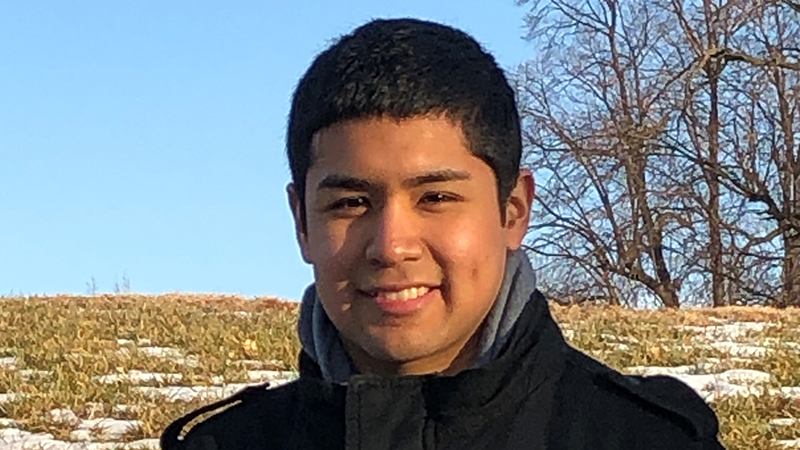
Graduate Student Spotlight: Alexis Chavez
NRT student Alexis Chavez is concerned about climate change and even more so about people who may get left behind in progress toward stopping it. 1/14/2022
Continue the Story
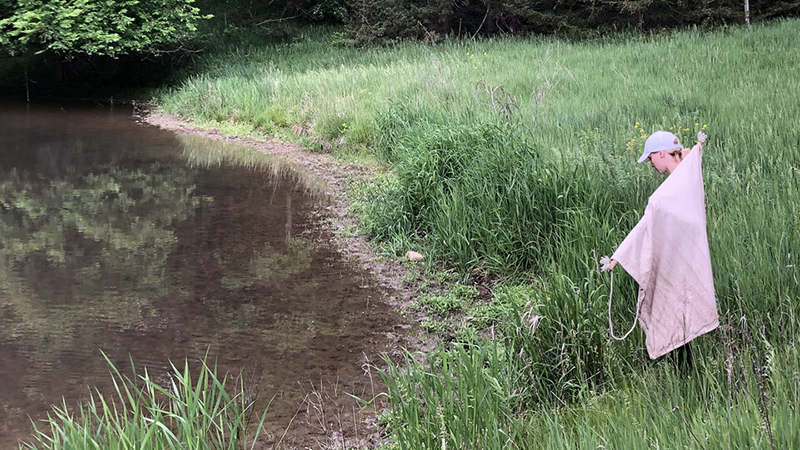
Uptick in tick-borne diseases spurs Cristiano's summer research
Nebraska’s Dominic Cristiano is directing his research to better inform the public about potential risks of tick-borne diseases across the Cornhusker State. 7/20/2021
Continue the Story
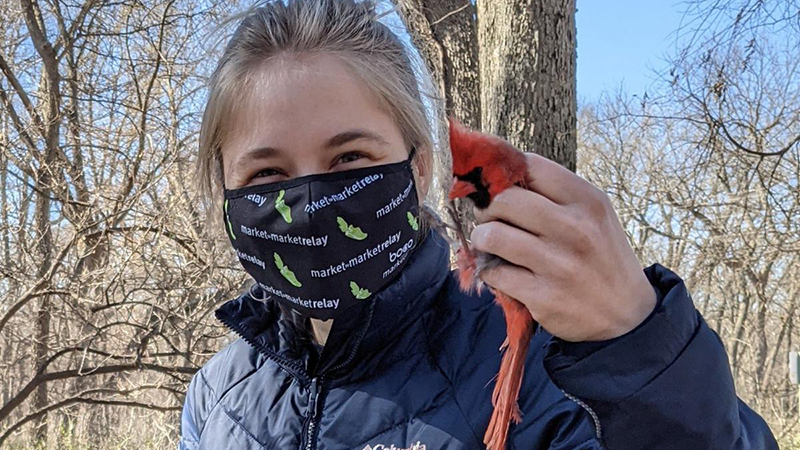
NRT doctoral student explores social resilience with sparrows and elephants
National Science Foundation National Research Traineeship (NRT) Program doctoral student Annie Madsen found creative ways to research golden-crowned sparrows in California and elephants in Sri Lanka while keeping to the prairies during the pandemic. 5/13/2021
Continue the Story
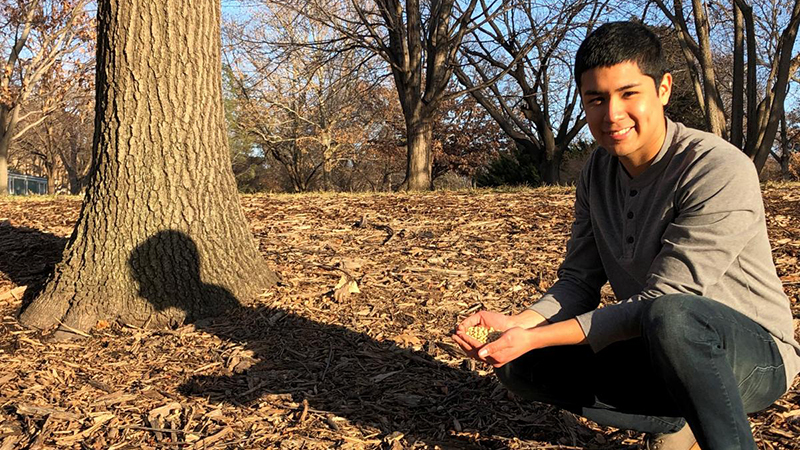
NRT student Chavez presents Brazilian collaboration at American Meteorological Society
While the pandemic closed some doors, NRT master’s student Alexis Chavez found it opened others. 1/27/2021
Continue the Story
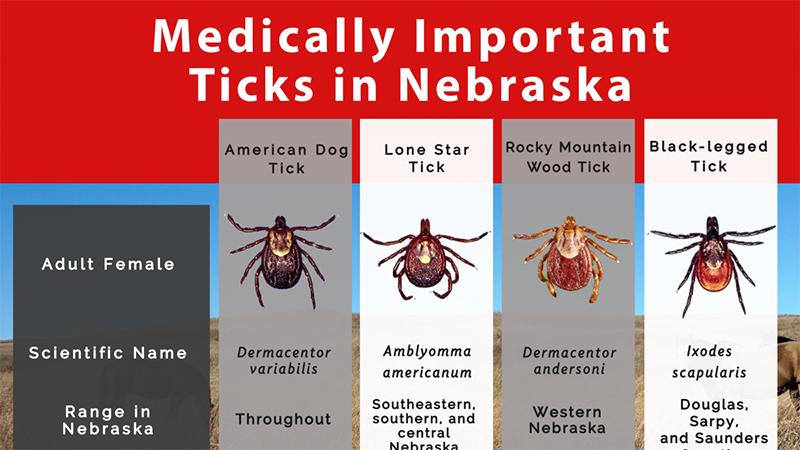
Mapping tick territory
After eons of landing on the legs and arms of humans and animals, ticks have landed smack-dab in the middle of the research interests of NRT master’s student Dominic Cristiano. 1/8/2021
Continue the Story
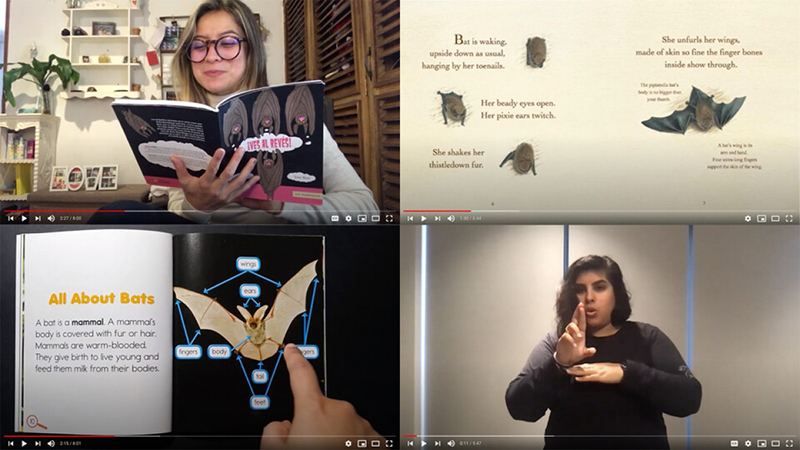
Wolf, multilingual outreach project going to bat for keystone species
In any language, 2020 has been a rough year for bats. The only mammal capable of true flight saw its already-spotty reputation dragged through more mud as conjecture, then early research, suggested that SARS-CoV-2 may have evolved from a coronavirus ancestor dwelling in some bat species. 1/7/2021
Continue the Story
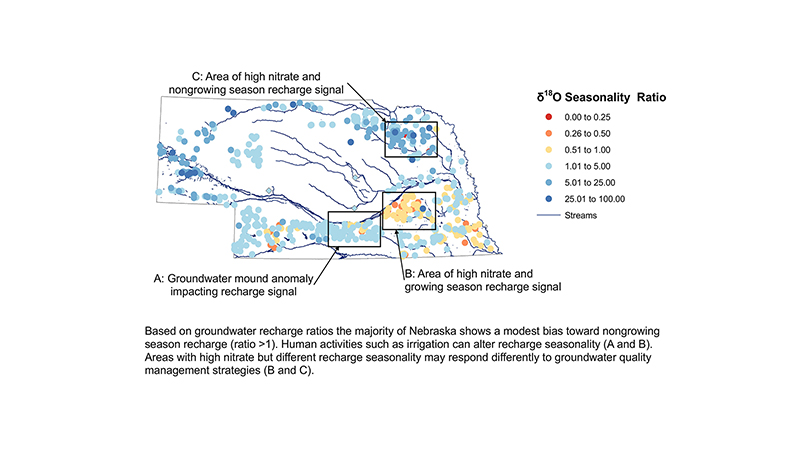
New research shows when Nebraska's groundwater supplies recharge
A recently published study led by University of Nebraska-Lincoln School of Natural Resources PhD candidate Mikaela Cherry found that winter precipitation reloads most of the state’s groundwater supply. 5/20/2020
Continue the Story
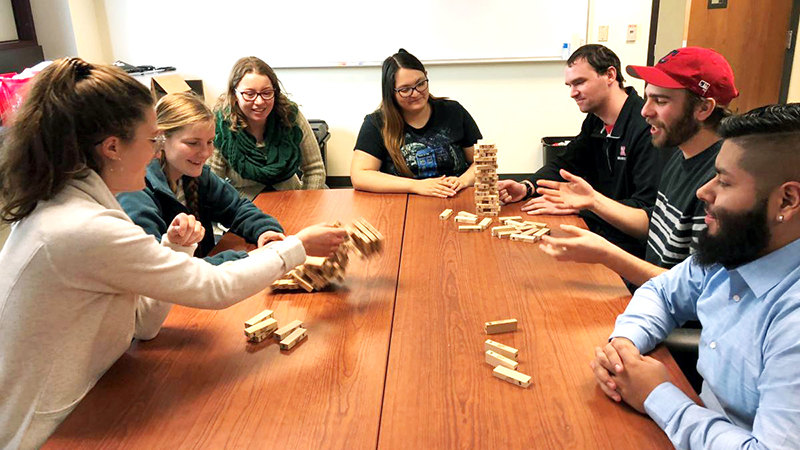
NRT students create open-access materials about resilience
University of Nebraska-Lincoln graduate students recently formed the Council of Resilience Education to equip the public with information and strategies for tackling harmful environmental changes through education resources, including games. 2/13/2020
Continue the Story
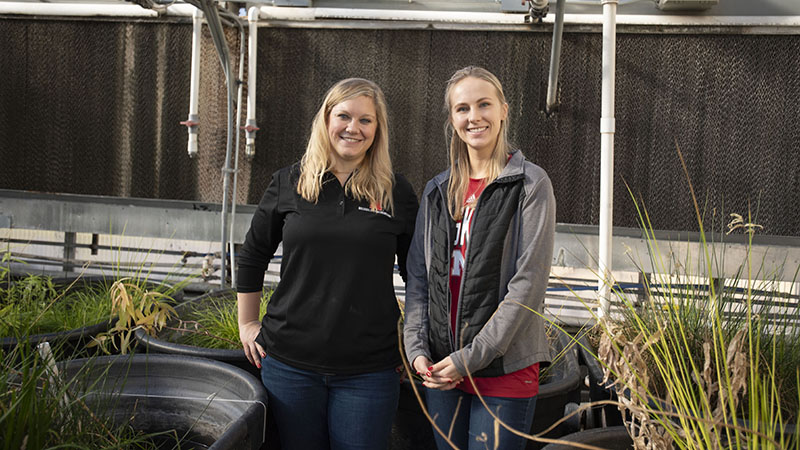
Researchers testing floating wetlands ability to survive winter
Alexa Davis, graduate student with the School of Natural Resources, is testing whether living, floating treatment wetlands can survive a Nebraska winter. If they do, it could have long-term, positive implications for Midwestern states trying to reduce nutrient runoff. Continue reading…
1/16/2020
Continue the Story
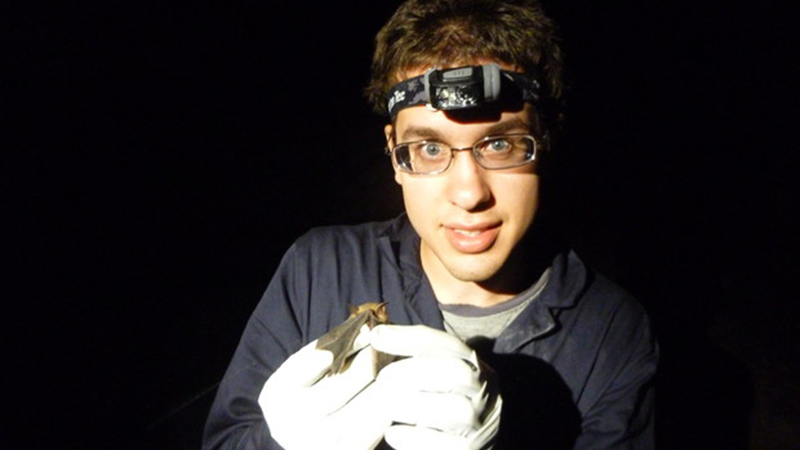
Study allows Husker to hang with bats
To many people, the spooky sight of a bat flying across a moonlit sky is a sign of Halloween. 10/31/2019
Continue the Story
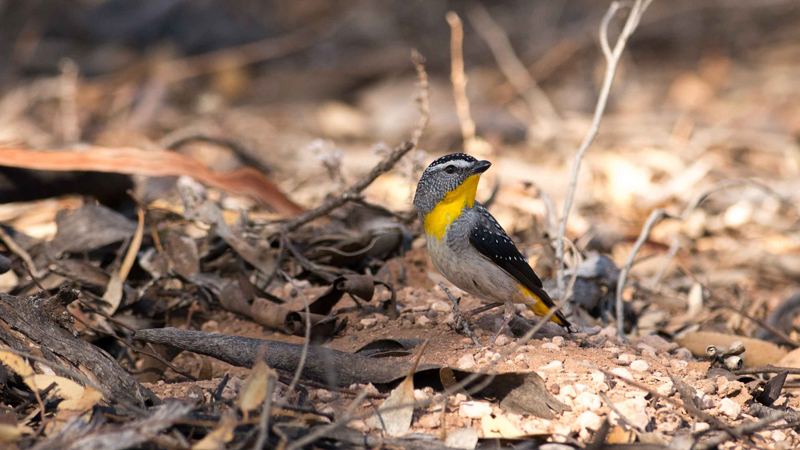
Malaria bird project a finalist in crowdfunding competition
Ian Hoppe, an SNR grad student, is a finalist in a crowdfunding competition at Experiment.com through July 3 for his project researching bird behavior and their exposure to parasites. If he earns the most financial backers by June 24, he'll get a $1,000 boost from the Wildlife Disease Association. 6/12/2019
Continue the Story
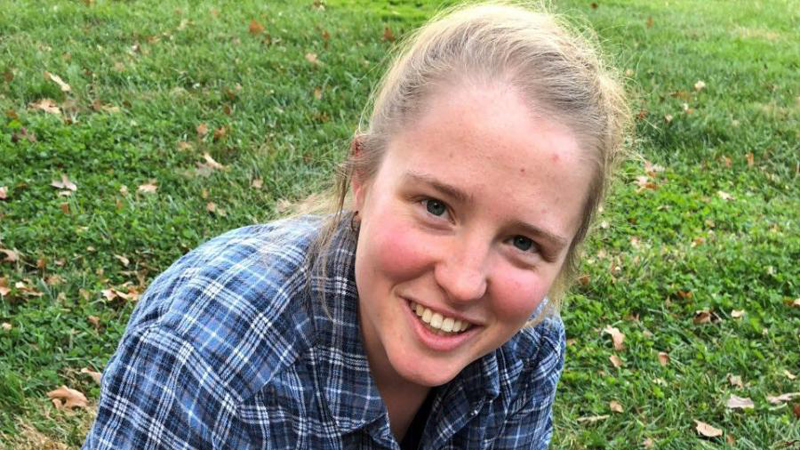
Grad spotlight: Katharine Hogan is growing roots in Nebraska
Meet Katharine Hogan, a doctoral student studying plant community ecology at the University of Nebraska-Lincoln 5/9/2019
Continue the Story
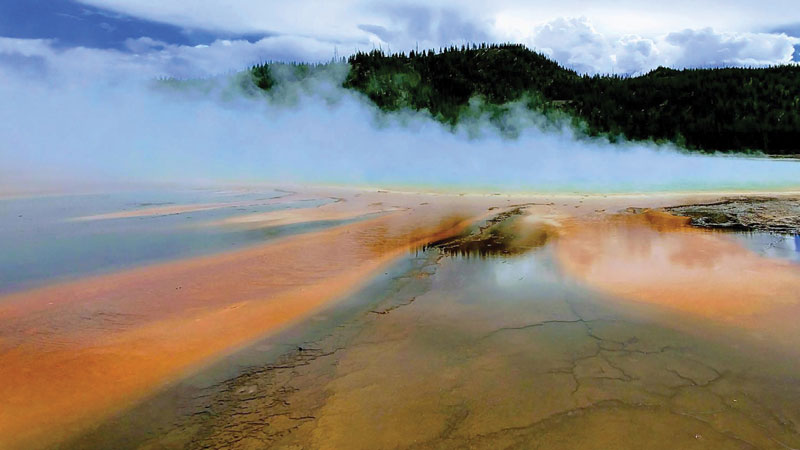
National park podcast features Willemssens, tiger beetle research
If you’re one of the 4.1 million guests to drive through Yellowstone National Park this year, you may just hear a familiar voice on the radio. Kelly Willemssens, of SNR, is featured in a podcast airing about one of the park’s tiniest and most valuable creatures: the wetsalts tiger beetle. 3/12/2019
Continue the Story
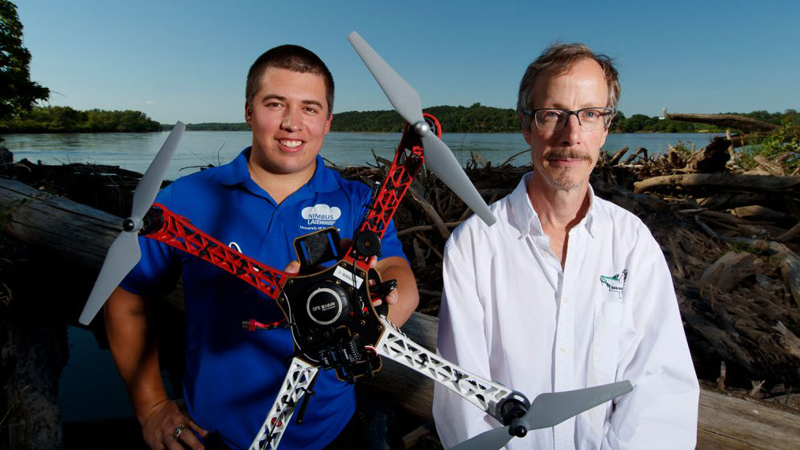
NRT program featured in Nebraska’s annual research report
Nebraska’s National Research Traineeship director Craig Allen and the research of NRT student Daniel Rico figured prominently in the University of Nebraska-Lincoln’s annual research report. The program is based at the School of Natural Resources. 12/4/2018
Continue the Story
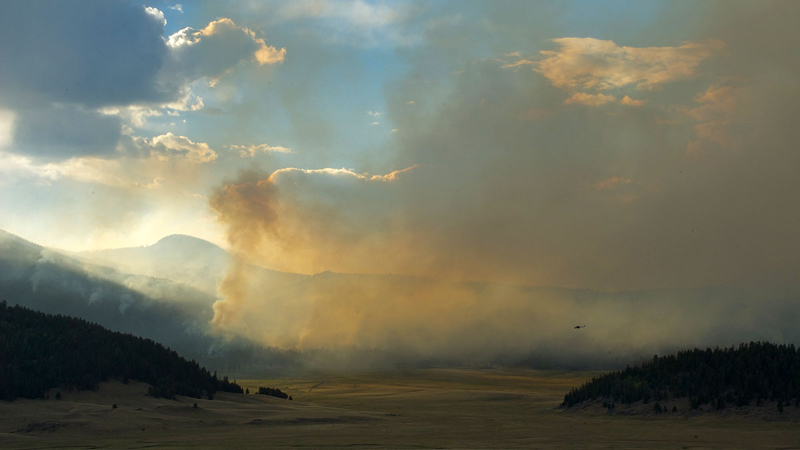
To Hold a Beautiful, Burning Snake
They said the Thompson Ridge wildfire was a good fire. A dead aspen, black and brown sheaves of bark sloughing off in the droughty summer, fell into a power line and ignited. 11/14/2018
Continue the Story

Master's student heads to Meteo-France
Starting in November 2018, National Drought Mitigation Center graduate research assistant Tony Mucia will be looking at remote-sensing data from a new vantage point on Earth. 11/7/2018
Continue the Story
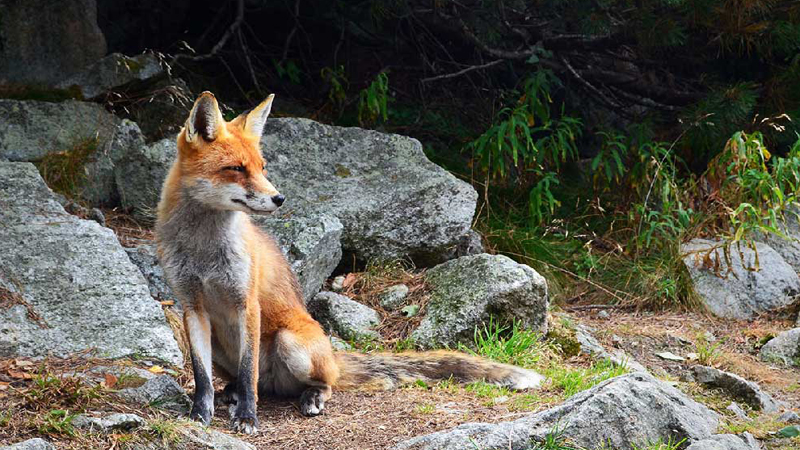
Urban foxes: Reports spike in Lincoln as researchers trap, study the sly animals
He carries with him rancid chicken necks, a bottle of fox urine and a jar of gland lure, so it’s best to stay upwind of Kyle Dougherty 5/29/2018
Continue the Story
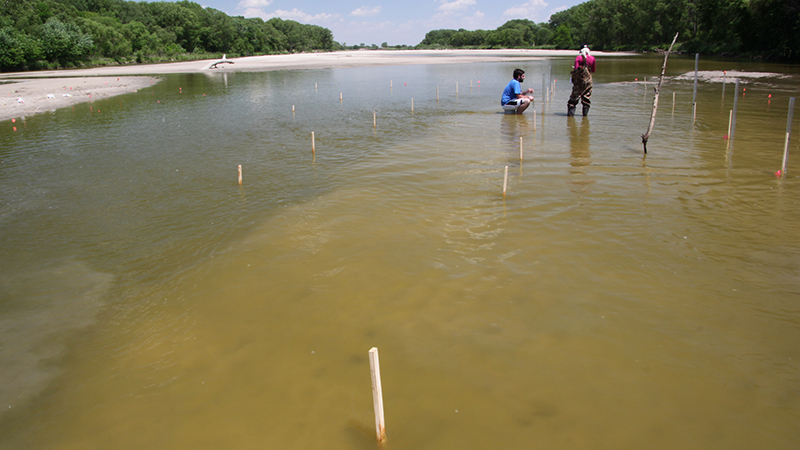
Investigating Hydraulic Conductivity Transience in Sandy Rivers
Drone imagery was used to monitor changes in stream geomorphology over time. This research project investigated processes responsible for hydraulic conductivity transience in sandy rivers. 1/1/2018
Continue the Story
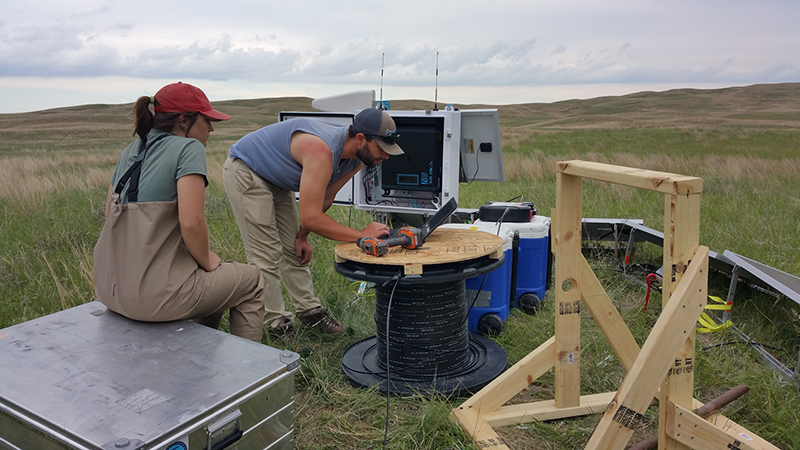
Fiber-optic Technique Senses Groundwater Discharge into Surface Water
Assembled fiber-optic distributed temperature sensor (FO-DTS) on Gudmundsen Sandhills Research Laboratory. FO-DTS is a technique that uses fiber-optic cable deployed on a streambed to sense groundwater discharge into surface water. 1/1/2018
Continue the Story
